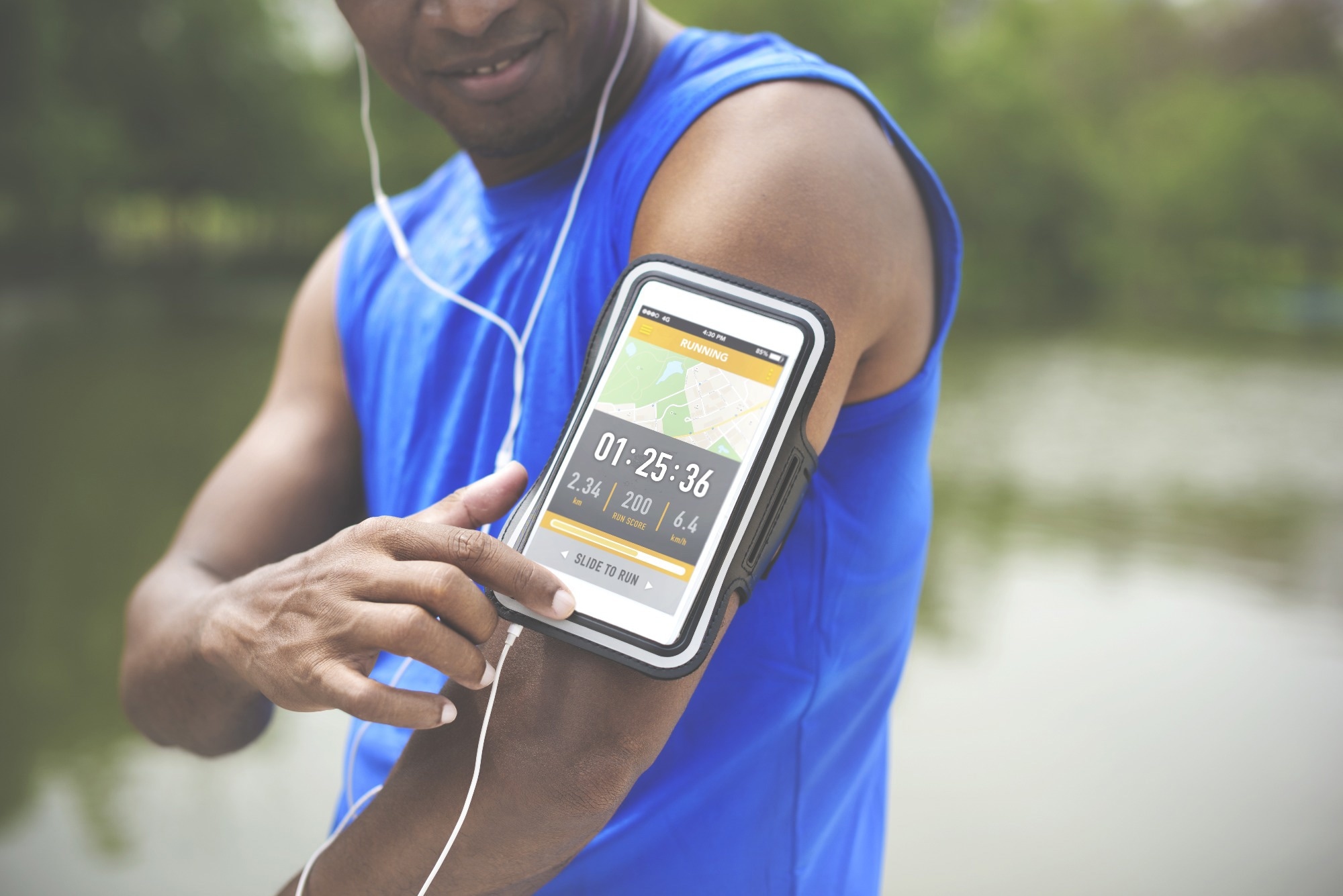In an article recently published in the journal Scientific Reports, researchers investigated the validity and reproducibility of smartphone-based estimation of body composition and anthropometric parameters in youth soccer players for the first time. They used data from this study to develop population-specific equations for the appendicular lean mass and the body fat percentage estimations. The smartphone app they used captured a set of bidimensional photographic silhouettes, which were extracted and linked to a 3D template mesh using artificial intelligence (AI) and machine learning (ML) algorithms.
 Study: Smartphone-Based AI for Estimation of Body Composition in Youth Soccer Players. Image credit: Rawpixel.com/Shutterstock.
Study: Smartphone-Based AI for Estimation of Body Composition in Youth Soccer Players. Image credit: Rawpixel.com/Shutterstock.
Background
Anthropometric measures are assessed routinely in rehabilitative medicine and sports due to their usefulness for re-injury prevention and performance optimization. Measurements such as skinfold thicknesses and limb circumferences are used extensively in adult and young athletes to evaluate body composition and training-related changes.
Tape-based measurements and caliper-based measurements of body circumferences and skinfold thicknesses, respectively, display poor reliability, specifically in individuals with obesity and overweight, which necessitated the development of cost-effective, valid, and reproducible technologies and their validation to perform non-invasive body composition and anthropometric assessments.
Digital anthropometry using three-dimensional (3D) optical imaging systems and smartphones can provide non-invasive and accurate body composition and anthropometric measurements. Although 3D imaging systems are still unavailable in most sports and clinical settings, smartphones and digital consumer cameras are used extensively and offer new tools that exercise scientists and physicians can use to assess athletes and patients, respectively. However, no study has performed digital anthropometric assessments of young athletes using smartphones until now.
The study
In this study, researchers investigated the validity and reproducibility of smartphone-based estimation of body composition and anthropometric parameters in youth soccer players. A total of 124 male players and 69 female players with median ages of 16.2 and 15.5 years, respectively, participated in this study.
Measurements of body height and weight using a standard scale with a stadiometer, one whole body dual-energy X-ray absorptiometry (DXA) scan using a Lunar iDXA system, and optical image acquisition were performed by researchers. The DXA scan output contained several body composition measurements, including appendicular lean mass, legs lean mass, arms lean mass, total lean mass, and total fat mass and its percentage.
Optical images were captured using the Mobile Fit app (version 3.0), with voice commands from the app guiding every player into position for self-scan. Each player was asked to assume a front A-pose and maintain that pose without moving the limbs or trunk to acquire the frontal image, and then asked to assume a side pose to acquire the lateral image.
The Mobile Fit app software created a de-identified 3D humanoid avatar with associated body composition estimates and anthropometric measurements. Researchers performed the lateral and frontal image acquisition twice to obtain two avatars for every player. The app report contained 243 segmental and whole-body circumferences, volumes, surface areas, and lengths. Body composition estimates were derived from several of these measurements using equations published in previous studies to estimate the appendicular lean mass and body fat percentage.
Avatar-derived body composition and anthropometric parameters considered for validity and reproducibility assessments were appendicular lean mass, total lean mass, fat mass and its percentage, hip circumference, waist circumference, and body surface area.
In the reproducibility assessment, alterations in body composition measurements and anthropometric parameters between the two avatars were evaluated using the paired sample T-test to determine systematic bias. In the validity assessment, several comparisons were performed between the Mobile Fit app-derived measurements/the average of two avatars and DXA-derived measurements, including Passing-Bablok regression analysis, Pearson correlation analysis, absolute average differences obtained from the Bland–Altman plots, and paired sample T-test.
Researchers utilized the fit linear regression model to develop population-specific equations for the appendicular lean mass estimation and the body fat percentage estimation. Specifically, they re-parameterized the equations proposed for estimating the appendicular lean mass and body fat percentage in previous studies using the data of soccer players from this study to obtain the population-specific equation.
Significance of the study
The Mobile Fit app displayed high accuracy in body size and composition measurements, with reproducibility analysis showing a percent standard error of measurement values of less than 10% for all body composition and anthropometric measurements, which indicated a high agreement between the measurements obtained for the two avatars of each player.
The app overestimated the body fat percentage when compared with DXA measurements, with an average overestimation of +3.7% and +4.6% in males and females, respectively, and underestimated both total lean mass by −2.6 kg in males and −2.5 kg in females and appendicular lean mass by −10.5 kg in males and −5.5 kg in females.
The re-parameterization of the previously proposed equations minimized the differences between the DXA-derived and Mobile Fit app-derived estimations, and new equations were obtained that can be utilized in youth athletes for body composition assessment through conventional anthropometrics-based prediction models.
Journal reference:
- Minetto, M. A., Pietrobelli, A., Ferraris, A., Busso, C., Magistrali, M., Vignati, C., Sieglinger, B., Bruner, D., Shepherd, J. A., & Heymsfield, S. B. (2023). Equations for smartphone prediction of adiposity and appendicular lean mass in youth soccer players. Scientific Reports, 13(1), 1-13. https://doi.org/10.1038/s41598-023-48055-y, https://www.nature.com/articles/s41598-023-48055-y